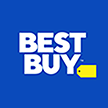Publishing is now a right and not a privilege. We’re all publishers on the Web. What that means for business is that if you’re not participating in the conversation, you may as well close down shop.
In this month’s Think Google, advertising thought-leader Andrew Keller offers his take on the role of social media in this new culture where brands are publishers and must use all available tools to cultivate consumer conversations around the brand:
“Today, brands don’t have to buy media if they don’t want to. They are successfully creating their own communication channels with their consumers. First they have to earn the channel; then they have to leverage it without losing it. This opportunity/necessity has shown brands what can happen when they do it well. Instead of branded content, their brand becomes content in people’s lives.
I think that paid media forms convinced us brands had nothing to say, or that people weren’t interested in what a packaged good, for example, had to say. So whereas ‘content’ was seen as a go-between connecting humans through shared experiences, .advertising’ was something that was only ever able to stand next to the conversation. Now, great brands are that conversation”
With a publisher’s approach to branding and communications, it makes sense to adopt the processes of publishing’s most prolific: news organizations. They’ve mastered the science of the story with two very important characteristics: speed and depth of view. Add to that interactivity and you’ve got a powerful publishing formula.
Applying Strengths of a Journalism Model to Marketing
The Online Journalism Blog has an interesting three part series outlining a model for the 21st-century newsroom, and in part 1 we find the flow of a story as it is born and developed by a media outlet.
Fast Response
Subscribe to alerts, text and email updates, and cultivated feeds on Twitter or Facebook to be on the cutting edge of breaking stories. Use mediums where a rougher quality is acceptable, like social media and blogs, to quickly publish basic facts and analysis. Provide a snapshot view of an issue, and as it’s created, make note of where it can be expanded or explained and analyzed in greater depth through packages.
In-depth Coverage
The next level of coverage provides more context about the topic, as well as greater analysis and reflection. Draw upon other expert sources to paint a complex portrait of the issue. While news organizations are encouraged to stay objective, as a brand you’re able to make a case for the point of view that supports the best interests of your business and its customers. The form that in-depth coverage takes varies, and includes articles, videos and ads featuring statements from key decision makers for the brand or interviews with those the issue affects.
Interaction
A newer evolution in news, but one with a vital role in the everyone’s-a-publisher paradigm, is the interactive component. Through new media, organizations and media consumers engage in ongoing dialogue, and it’s expected that brands provide the channels that allow for customer to weigh in. Whether by open comments, video responses, or chiming up with their own posts on Twitter or Facebook, once an issue is introduced, the conversation will continue.
The channel on which it does so can’t always be controlled by the brand. Here’s where the news organization comparison branches off, as a brand has a higher responsibility to engaging its audience on all channels. A brand must embrace a two-pronged approach to interaction. The first is trying to keep the conversation in its own channels as much as possible, allowing for greater control of the message. A brand must also use alerts keep up with the conversation happening across the Web.
Distributed Journalism: Drawing on Your Community
Digital tools have phased out traditional communication channels in many ways, but the old principles for news coverage and publication hold true. In part 2 of the 21st century newsroom series we get a look at a concept called “distributed journalism.” This is where no one content asset dominates, but rather there exists a network of cultivated communities all feeding into the system.
Don’t be discouraged by the daunting task of overseeing a disassociated conversation, but recognize each as a resource that feeds into the system. Use each community like a feeler in your niche. One is the ear, another’s the voice, and they all aid a crowd-sourced collective.
With the public’s help you can be first to the conversation. Respond quickly and acknowledge a topic comprehensively to establish a trusted and authoritative voice in the marketplace.
Author: Virginia Nussey
Courtesy of www.bruceclay.com


















